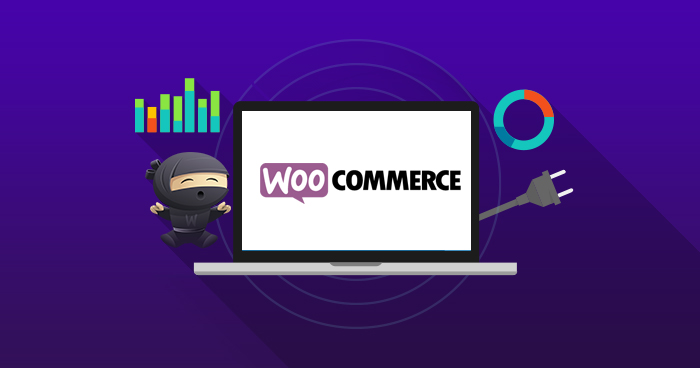A Beginners Guide to SEO with WooCommerce
In a perfect digital world, all you’d need to do is put your products on sale, sit back, and watch the money roll in. However, this is the real world, and things are quite different. For your store to succeed, it first needs to be found easily by shoppers.
The good news is that there are ways to rise in search engine rankings. By implementing search engine optimization (SEO) tactics, you can boost your WooCommerce site’s visibility and revenue. In this guide, we’ll walk you through the SEO basics for WooCommerce for getting your site to the top of the search results. Read through our guide to SEO carefully as we cover several key points.

The Importance of SEO
Search engine optimization is the practice of enhancing your website’s organic search engine ranking to make it more visible. This entails optimizing the speed, security, and usability of your website. On-page SEO is also necessary.
GlobalWebIndex estimates that 81% of consumers search online before making a purchase. As a result, website owners must focus on search engine optimization to increase traffic and, ultimately, sales.
What Is WooCommerce?
WooCommerce is a free and open-source eCommerce plugin for WordPress. With this tool, you can create and manage an online store on the most sophisticated content management system (CMS) platform. Additionally, since it is open-source, you have full control over the design and functionality of your store.
WooCommerce is designed to be search engine friendly. It is built on top of WordPress, which is well-suited to search engine optimization because of its standard compliance.

WooCommerce SEO Basics
WooCommerce search engine optimization can be achieved in a variety of ways. You’ll learn everything you need to know about increasing your store’s internet visibility by following these simple steps.
Pick the Appropriate Keywords
One of the most crucial aspects of good eCommerce SEO is choosing the correct keywords and phrases. Getting visitors to your site is necessary but drawing in ideal customers is critical. Finding the best keywords to reach your target audience may take some time and effort, but the payoff is well worth the trouble in the end. Using tools like Keyword Planner and SEMRUSH, you can collect information on keyword volume, trends, competition, comparable keywords, and more.
Optimize Products and Pages With Keywords
Once you’ve found the right keywords, you can incorporate them into your content. Search engines will see this as a sign that your page or product is an excellent match for these words. Here are some areas where you need to include your primary keyword:
- Product title: The focus keyword must be included in the product title to maximize its visibility. When a page’s SEO title has its main keyword, it receives a boost in the rankings. Aside from giving an excellent opportunity to use important keywords, your title must also entice people to go through to your website and read your content.
- URL: WordPress provides a URL depending on the title of your page. However, stop words such as “an,” “the,” and “that” should be removed from this URL to improve its performance. These words don’t do anything for your search engine optimization and take up a lot of your character limit.
- Alt-text: Search engines utilize alt text to interpret images. Keywords should be used in the alt text wherever possible. By doing this, search engines will better understand the image’s content, increasing the likelihood that it will show up in relevant search results.
Improve Website Speed
Since 2010, page speed has been an official ranking factor for Google. With tools like PageSpeed Insights, you can analyze the general performance of your website. There are plenty of ways to improve site speed. WP Super Cache and other caching plugins can help with this, as can using a hosting company that emphasizes performance. Content delivery networks (CDN) and lazy loading are other options.

Publish Relevant Content Regularly
Google’s mission is to provide users with the most relevant results possible. People searching for indoor plants will probably be directed to your website if you have the most comprehensive collection of information on the subject available on the web. You can show Google that you’re an expert in a specific field by constantly publishing high-quality content. Another benefit of a regular publishing schedule is that it shows that you’re consistently putting out high-quality, relevant content on the internet.
Install an SSL Certificate on Your Site
An SSL certificate encrypts the data sent between the customer’s browser and your online store, making it more secure. This can protect sensitive information, including payment details, from being stolen by nefarious third parties. Your customers’ privacy is at risk without an SSL certificate. As such, it’s a must for online stores.
When SSL is enabled, most web browsers show a padlock icon. This can boost customer confidence in your business, which is good for sales. Moreover, Google has stated that they employ HTTPS (HTTPS) as a ranking factor, which derives from holding an SSL certificate.
Build External and Internal Links
With plenty of external links from reputable websites, the authority, relevance, and trust in your store will improve. As a result, your search engine rankings may rise as well.
For backlinks, you need to generate interesting and shareable content, such as infographics and videos. You can also use various tools to run a link gap assessment and see which domains are linked to your competition. These sites can then be approached for link-building purposes. Your SEO may also be affected by the quality of your own website’s internal links. Customers benefit from a well-organized internal linking structure that makes it easier to access relevant content. This can increase the time spent in a session and the number of pages viewed.

Enable Breadcrumbs
Breadcrumbs are a great way to show users where they currently are, where they’ve been from, and where they should go next. This not only improves user satisfaction but also has a significant impact on your website’s SEO. The reason for this is that Google deems a site as well-structured if it has breadcrumbs for each of its pages.
The Bottomline for Guide to SEO
Regardless of the nature of your online store, you must ensure that your website is performing well in terms of search engine optimization. By following WooCommerce SEO best practices, you can get the upper hand. Your site’s visitors are more likely to become paying customers if you employ sound SEO techniques. If you’ve been struggling with this challenge, we hope that the tips we’ve shared in this article on SEO basics for e-commerce can help guide your way.







0 Comments